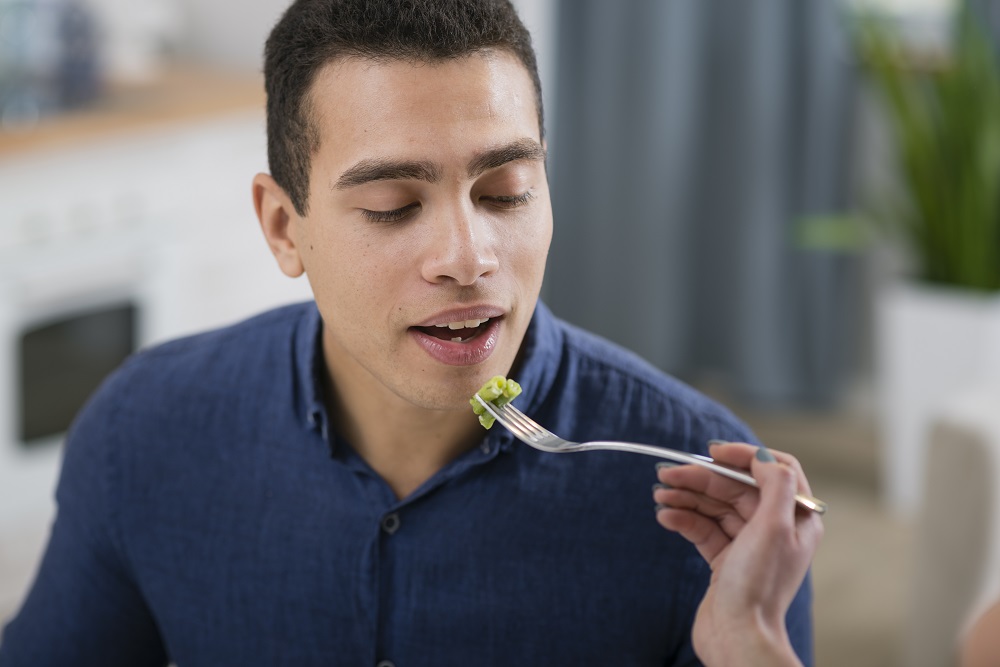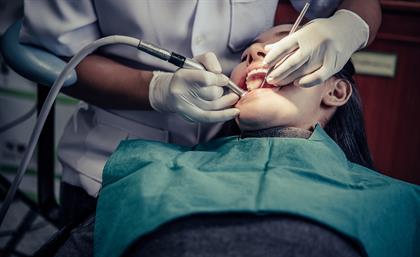
Food allergies are becoming increasingly common among children and adults, leading to worry, dietary restrictions, and confusion about what foods are safe to eat. Skin prick tests and blood tests often help evaluate potential allergens, but they do not always provide clear answers. This is where the oral food challenge comes in—the most reliable method for diagnosing food allergies.
The oral food challenge procedure is carefully designed to determine whether a person is truly allergic to a particular food. It is performed under strict medical supervision and provides clarity for patients and families who have lived with uncertainty for years.
This detailed guide explains how the oral food challenge procedure works, the risks involved, how to prepare, and what patients can expect before, during, and after the test.
What Is an Oral Food Challenge?
An oral food challenge (OFC) is a diagnostic test performed by an allergist in a controlled environment. During the test, the patient consumes small, gradually increasing amounts of a suspected allergen while medical professionals closely monitor for signs of an allergic reaction.
Unlike skin tests or blood tests, which only indicate sensitization, an OFC confirms whether eating the food will trigger actual symptoms. That is why it is considered the gold standard in food allergy diagnosis.
When Is an Oral Food Challenge Recommended?
Allergists may recommend the oral food challenge procedure for the following reasons:
1. When allergy tests give unclear results
If blood or skin tests are borderline or conflicting, an OFC helps confirm the diagnosis.
2. When a child may have outgrown a food allergy
Common childhood allergies to milk, eggs, wheat, and soy often improve with age.
3. When dietary restrictions need reevaluation
Some families avoid foods unnecessarily for years due to false positives on allergy tests.
4. When checking tolerance after treatment
Patients undergoing oral immunotherapy (OIT) may need an OFC to confirm progress.
5. When assessing reaction threshold
Some individuals can tolerate small amounts of an allergen without reacting. An OFC helps determine safe limits.
Types of Oral Food Challenges
The oral food challenge procedure can be conducted in three formats:
1. Open Food Challenge
Both patient and physician know the food being tested.
This is the most common and simplest method.
2. Single-Blind Food Challenge
Only the healthcare provider knows when the patient is receiving the allergen.
3. Double-Blind, Placebo-Controlled Food Challenge (DBPCFC)
Neither the patient nor the provider knows whether the food contains the allergen.
This is the most accurate but also the most time-consuming.
Most patients undergo an open challenge unless a more controlled test is needed.
How the Oral Food Challenge Procedure Works: Step-by-Step
Understanding the process helps ease anxiety and makes the test less intimidating. Below is a detailed breakdown of the oral food challenge procedure from start to finish.
Step 1: Pre-Test Evaluation
Before scheduling an OFC, the allergist reviews:
The patient’s complete medical history
Reaction history to the suspected food
Skin prick and blood test results
Current health status
Medications being taken
Asthma control (if applicable)
If conditions are safe, the doctor will schedule the oral food challenge procedure.
Step 2: Preparation and Instructions
Patients receive detailed pre-test instructions that may include:
✔ Avoiding antihistamines
These medications can mask early symptoms.
Most must be stopped 3–7 days before the procedure.
✔ Staying healthy
The OFC will be postponed if the patient has:
Fever
Cold symptoms
Asthma flare
Stomach issues
Skin infections
✔ Bringing the required food
Some clinics provide the test food; others ask families to bring a specific brand or preparation.
✔ Eating a light meal beforehand
This prevents discomfort during the test.
✔ Bringing comfort items
Since the test can last several hours, patients often bring:
Books
Toys
Tablets
Snacks (non-allergic)
Step 3: Arrival and Baseline Check
Upon arrival for the oral food challenge procedure, medical staff will:
Check vital signs
Evaluate breathing
Examine skin
Confirm the patient is symptom-free
Review emergency protocols with the family
Once baseline health is confirmed, the test begins.
Step 4: Administering the Food in Small Doses
The allergenic food is divided into measured, gradually increasing portions, typically over 6–8 steps.
Dose 1 — Tiny amount
This may be as small as a crumb or drop.
Dose 2–6 — Gradual increases
Each portion is slightly larger than the previous.
Final dose — Normal serving
If tolerated, the patient consumes an age-appropriate serving size of the food.
Monitoring between doses
After each dose, the patient waits 15–30 minutes while the staff monitors for:
Hives or skin redness
Coughing or wheezing
Swelling of lips or eyes
Stomach pain or vomiting
Itching
Behavioral changes in children
Any sign of reaction results in stopping the test immediately.
Step 5: Observation Period
After the last dose, the patient stays for 1–2 hours to observe for delayed symptoms.
Clinics keep emergency medication ready at all times, including:
Epinephrine
Antihistamines
Inhalers
Steroids
This ensures the oral food challenge procedure remains as safe as possible
Step 6: Results and Final Instructions
At the end of the test, one of two outcomes occurs:
✔ Negative Oral Food Challenge (No Allergy)
If the patient tolerates all doses without symptoms:
The food is considered safe
Doctors advise regular consumption at home to maintain tolerance
Reintroduction guidelines are provided
✔ Positive Oral Food Challenge (Allergy Confirmed)
If symptoms appear:
The allergic reaction is treated immediately
The food remains restricted
Emergency action plans are updated
An epinephrine auto-injector may be prescribed
Follow-up care is arranged
Risks of an Oral Food Challenge
The oral food challenge procedure is very safe when performed by an expert allergy specialist. However, like any medical test, it carries some risks.
Common mild reactions
Hives
Rashes
Itching
Stomach cramps
Nausea
Vomiting
Moderate reactions
Persistent coughing
Wheezing
Mild swelling
Severe reactions (rare)
Trouble breathing
Throat tightness
Drop in blood pressure
Anaphylaxis
Clinics performing OFCs are prepared to manage symptoms immediately with appropriate medications.
How to Prepare for an Oral Food Challenge
Proper preparation can help the test run smoothly and accurately.
✔ Follow medication guidelines
Stopping antihistamines is essential for accurate results.
✔ Sleep well the night before
Being rested helps reduce anxiety and increases comfort.
✔ Bring comfort items
Books, games, and snacks (non-allergic foods) help pass the time.
✔ Wear comfortable clothing
This makes monitoring easier.
✔ Avoid heavy exercise before and after
Activity can trigger or worsen allergic reactions.
✔ Stay hydrated
Drink water before the appointment unless the doctor advises otherwise.
What to Expect After the Oral Food Challenge
After completing the oral food challenge procedure, patients may experience the following:
1. Eating the Food at Home
If the challenge is negative, the allergist will recommend that the food be eaten regularly at home to prevent the allergy from redeveloping.
2. Avoiding the Food After a Positive Test
If the test confirms an allergy, the food must remain strictly off-limits.
3. Monitoring for Delayed Reactions
Although rare, delayed symptoms may occur. Patients should watch for:
Rashes
Vomiting
Swelling
Doctors will provide emergency instructions before discharge.
4. Follow-Up Appointments
A follow-up meeting ensures the patient is safe and comfortable with next steps.
Benefits of the Oral Food Challenge Procedure
✔ Accurate diagnosis
The most reliable way to confirm a food allergy.
✔ Prevents unnecessary restrictions
Many people avoid foods they’re not truly allergic to.
✔ Improves nutrition
Reintroducing safe foods supports balanced diets.
✔ Enhances quality of life
Families gain confidence and freedom with clearer answers.
✔ Supports long-term treatment planning
Results help allergists create personalized management strategies.
Conclusion: Is the Oral Food Challenge Procedure Right for You?
The oral food challenge is the most trusted method for diagnosing food allergies and clearing up confusion caused by other tests. It provides accurate answers, helps eliminate unnecessary food restrictions, and gives families peace of mind.
If you or your child has a suspected food allergy—or if test results have been unclear—talk to a certified allergist about whether the oral food challenge procedure is appropriate.
With expert supervision, this test is safe, informative, and one of the most important steps toward a healthier, stress-free lifestyle.
Leave a Reply
You Might Like Also

A Complete Guide to Women’s Wellness Exams: Tests, Benefits & Frequency

Top Benefits of Working With a Dual Diagnosis Therapist for Recovery

Tooth Extraction Healing Process: From Day 1 to Full Recovery

Affordable and Quality Dental Services at Marietta Dental Care

The Science Behind the Best Time to Get Your Flu Shot











